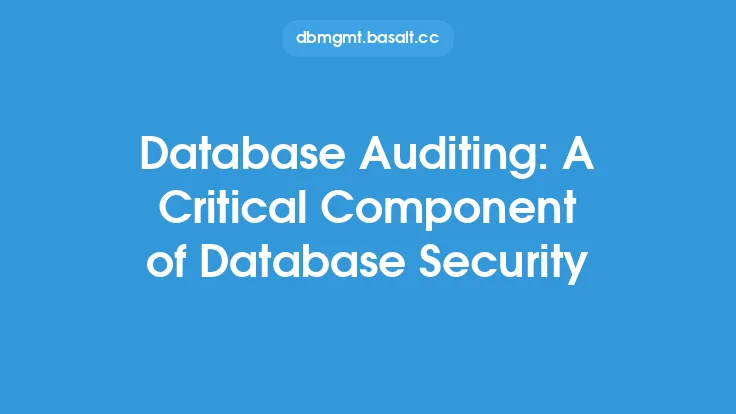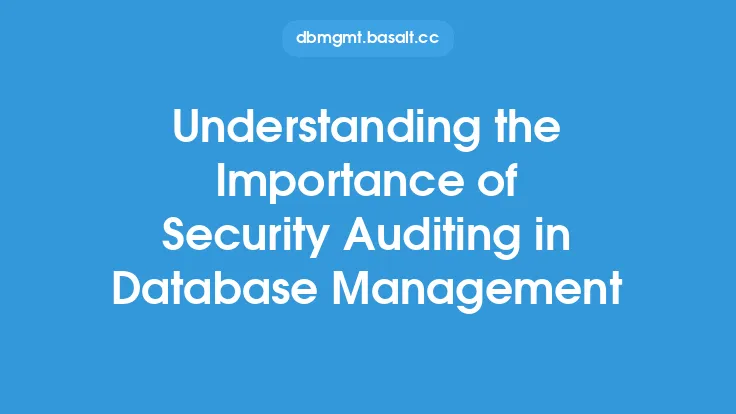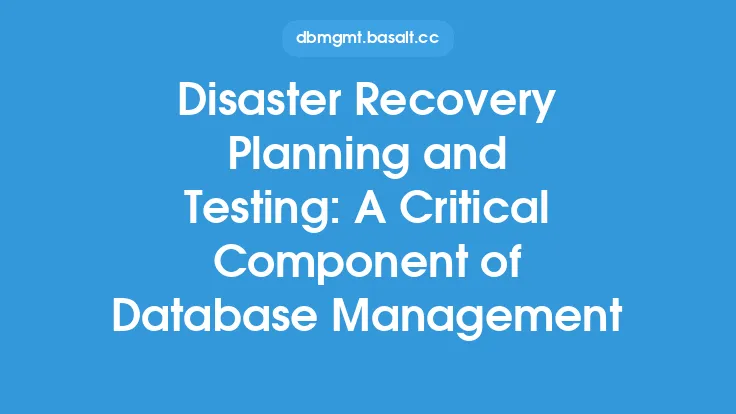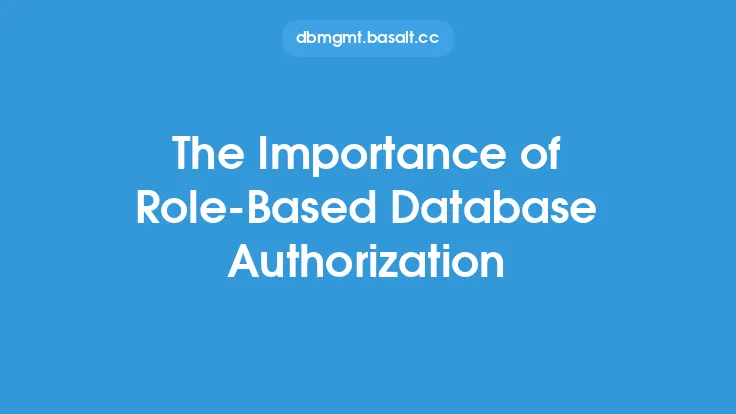Database security is a critical aspect of protecting sensitive data, and authorization plays a vital role in ensuring that only authorized users have access to the database and its resources. Authorization is the process of granting or denying access to database objects, such as tables, views, and stored procedures, based on a user's identity and permissions. In this article, we will delve into the world of database authorization, exploring its key components, concepts, and techniques.
Introduction to Database Authorization
Database authorization is a mechanism that controls access to database resources, ensuring that users can only perform actions that they are authorized to do. It involves verifying the identity of users and checking their permissions before allowing them to access or modify database objects. Authorization is typically based on a set of rules, known as authorization rules or policies, which define the access rights of users and roles. These rules can be based on various factors, such as user identity, group membership, role, or permissions.
Key Components of Database Authorization
There are several key components that make up a database authorization system. These include:
- Authentication: The process of verifying the identity of users, which is typically done through a username and password combination.
- Authorization rules: A set of rules that define the access rights of users and roles, which can be based on various factors such as user identity, group membership, or permissions.
- Permissions: The rights granted to users or roles to perform specific actions on database objects, such as read, write, or execute.
- Roles: A way of grouping users with similar access rights, making it easier to manage permissions and authorization rules.
- Privileges: The rights granted to users or roles to perform specific actions on database objects, such as creating, altering, or dropping tables.
Types of Database Authorization
There are several types of database authorization, including:
- Discretionary Access Control (DAC): A type of authorization that grants access to database objects based on the discretion of the owner of the object.
- Mandatory Access Control (MAC): A type of authorization that grants access to database objects based on a set of rules that are mandatory and cannot be changed by the owner of the object.
- Role-Based Access Control (RBAC): A type of authorization that grants access to database objects based on the role of the user, rather than their individual identity.
- Attribute-Based Access Control (ABAC): A type of authorization that grants access to database objects based on a set of attributes associated with the user, such as their department or job function.
Database Authorization Techniques
There are several techniques used to implement database authorization, including:
- Access Control Lists (ACLs): A list of users or roles that have been granted access to a database object, along with the permissions they have been granted.
- Row-Level Security (RLS): A technique that allows access to specific rows of a table based on the user's identity or role.
- Column-Level Security (CLS): A technique that allows access to specific columns of a table based on the user's identity or role.
- Encryption: A technique that protects data by converting it into an unreadable format, which can only be decrypted by authorized users.
Benefits of Database Authorization
Database authorization provides several benefits, including:
- Improved security: By controlling access to database resources, authorization helps to prevent unauthorized access and protect sensitive data.
- Increased compliance: Authorization helps to ensure that database access is compliant with regulatory requirements and industry standards.
- Better data management: Authorization helps to ensure that data is only accessed and modified by authorized users, which helps to maintain data integrity and consistency.
- Reduced risk: Authorization helps to reduce the risk of data breaches and cyber attacks by limiting access to sensitive data.
Challenges of Database Authorization
Despite its importance, database authorization can be challenging to implement and manage, particularly in large and complex databases. Some of the challenges include:
- Complexity: Database authorization can be complex, particularly in databases with many users, roles, and permissions.
- Scalability: Database authorization can be difficult to scale, particularly in databases with large numbers of users and transactions.
- Performance: Database authorization can impact database performance, particularly if it involves complex queries or large amounts of data.
- Management: Database authorization requires ongoing management and maintenance, which can be time-consuming and resource-intensive.
Best Practices for Database Authorization
To ensure effective database authorization, several best practices should be followed, including:
- Implement a least privilege approach: Grant users only the permissions they need to perform their jobs, rather than granting them full access to the database.
- Use roles and groups: Use roles and groups to simplify permission management and reduce the complexity of authorization rules.
- Monitor and audit database activity: Regularly monitor and audit database activity to detect and respond to security incidents.
- Use encryption: Use encryption to protect sensitive data, both in transit and at rest.
- Regularly review and update authorization rules: Regularly review and update authorization rules to ensure they are accurate and effective.





